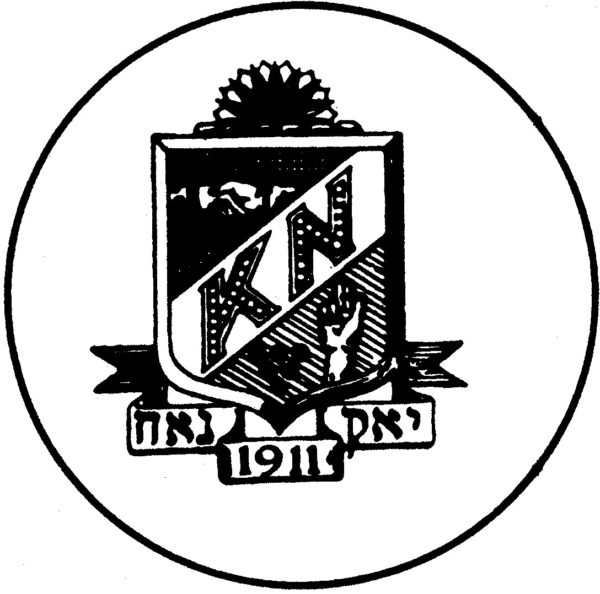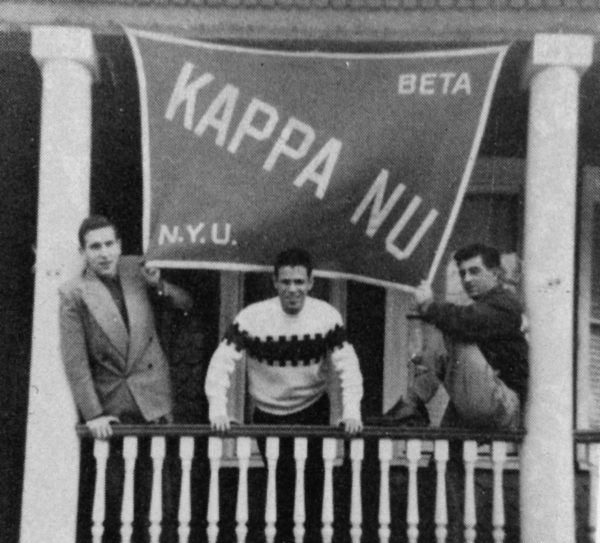Kappa Nu
 On the campus of Rochester University, on November 12, 1911, Kappa Nu Fraternity was founded by: Joseph Bernhardt, Abraham Levy, Joseph Lazarus, Harold Leve, Morris Lazersohn and Louis Gottlieb.
On the campus of Rochester University, on November 12, 1911, Kappa Nu Fraternity was founded by: Joseph Bernhardt, Abraham Levy, Joseph Lazarus, Harold Leve, Morris Lazersohn and Louis Gottlieb.
It was a local organization formed by these six men and extended no further than the campus. As its members graduated, the organization began admitting new members to replace those who had left. Several men who left Rochester met others and organized the Rochester Society thus extending this new organization.
By 1917, there were five loosely connected groups who decided to hold a convention in Rochester and set up the Organization of Kappa Nu as a National Fraternity. This was the first Kappa Nu convention and Nat Sanow was elected the first national president. By the second annual convention in 1918, the University had ten chapters. Other groups continued to colonize through 1931.
The annual convention of 1919 took place in Albany and was followed by one in Boston the next year – the first at which a formal social affair was part of the program. The administration during the Post War period saw a National Central office established and the start of a Permanent Endowment Fund. The first song book was issued and chapter-owned homes began to make their appearance. Emphasis was placed upon internal expansion of the fraternity at this time and many new chapters were added to the roll.
The economic depression had serious effects on Kappa Nu. With the depression, fewer men came  to college and a smaller percentage could afford the expenses incurred by membership in fraternities. The 1933 convention in Chicago faced the fact that it was necessary, as stated by N.H. Garson Meyer in his opening address, “to review and revalue the aims, purposes and need for the existence of the fraternity” and set about changing the organization to meet changed conditions and needs. Four new chapters were added during the 1930’s.
to college and a smaller percentage could afford the expenses incurred by membership in fraternities. The 1933 convention in Chicago faced the fact that it was necessary, as stated by N.H. Garson Meyer in his opening address, “to review and revalue the aims, purposes and need for the existence of the fraternity” and set about changing the organization to meet changed conditions and needs. Four new chapters were added during the 1930’s.
The war years of 1942-45 brought far reaching changes to the fraternity. Large segments of chapters were drafted into the services at one time. In some instances, no members remained in the Chapters and in others a few men struggled to keep the flame of fraternity burning. Then with the end of the War, and the fulfillment of the promise of the “G.I. Bill of Rights” the return to the campus began.
The post-war years witnessed tremendous forward strides by Kappa Nu. Annual conventions were resumed, being held from coast to coast from 1946-1960. The merger of Phi Epsilon Pi and Kappa Nu was announced formally at the Grand Convention in Atlantic City in 1961.
| Chapter | University |
|---|---|
| Alpha | University of Rochester |
| Beta | New York University |
| Delta | Union College |
| Epsilon | Boston University |
| Eta | Harvard University |
| Iota | Union College |
| Kappa | Rensselaer Polytechnic Institute |
| Kappa Phi | Alfred University |
| Mu | University of Michigan |
| Nu | University of Pennsylvania |
| Omega | New York University |
| Omicron | University of Chicago |
| Pi | University of Alabama |
| Rho | University of Cincinnati |
| Sigma | Tulane University |
| Tau | University of California-Berkeley |
| Theta | University at Albany |
| Upsilon | University of Arkansas-Little Rock |
| Zeta | University at Buffalo |
| Alpha Beta | Cornell University |
| Alpha Omega | Wayne State University |
